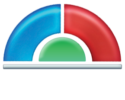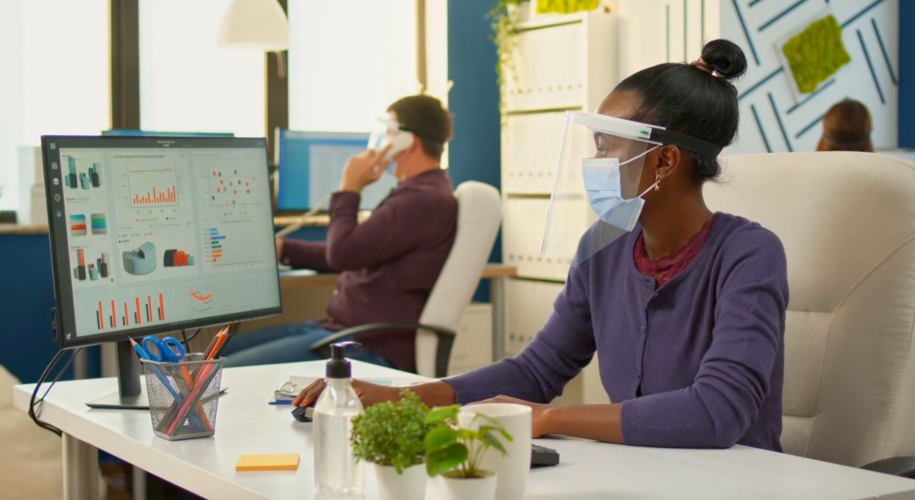As employers plan to open their doors again, the futuristic era of work poses new challenges. Now, there are employees that wish to permanently work from home, versus those who are excited to return to the office again. Ultimately, many employers are looking towards adopting a hybrid work model to provide flexible work arrangements; in-office and remote. However, some companies, such as Goldman Sachs, are requiring their employees to mandatorily return to work. The main question is, how will corporations reassure workers that the office is safe from the Covid-19 infections? Employee health screening is key, but there’s more to the equation.
Employees want to feel confident that their employer is taking the appropriate measures to ensure a symptom-free environment with social distancing protocols in place. It will be important for companies to find a way to work together collaboratively, regardless of being present in the office. From pre-health screening to room booking systems, newly revamped COVID-19 technology innovations will help employees and employers manage their workspaces completely. For one, teamwork and self privacy will be prioritized. Furthermore, space optimization is a critical component to ensure efficient use of office space.
Employees can sign in and respond to health questionnaires using a unique URL. The information is stored securely on a central encrypted server to address privacy and regulation concerns. The health screening process is seamless and ensures a company is compliant on a daily basis.
Employee Health Screening is Critical for In-Office Work Within the Hybrid Work Model
With regards to employees reporting into work, health screening will be critical. The traditional pen-and-paper method to sign in is unsustainable. Manual employee health screenings and temperature checks are time-consuming. States like Minnesota and New Mexico still require daily health screening for symptoms prior to entering the workplace. It is evident that filling out a logbook adds excessive paperwork as staff spends hours on a process that could easily be automated. Employers in states with mandates have a compliance responsibility, and inadequate collection of health screening data could result in fines or temporary shutdowns as a result of violating OSHA regulations as per the CDC guidelines.
COVID-19 is here to stay and will continue to linger with the chance of outbreaks occurring if not controlled. Companies must find the right tools to offset risks. Spreadsheets simply do not cut it when it comes to contact tracing. Sending employees home for 14 days to self-isolate is a nuisance to business operations.
An optimal solution is to introduce digital pre-check-in apps via QR codes to the workplace, such as MyLobby’s. This avoids face-to-face interaction while providing a confidential way to answer health-related questionnaires. Best of all, there is a minimal learning curve for workers that already use a smartphone. In addition, automation of contact tracing is helpful if there is a Covid-19 outbreak situation.
Beyond Just Employee Health Screening; Room Scheduling Systems to Support the Hybrid Work Model
According to McKinsey Research, 52% of employees prefer hybrid work models in the post-pandemic world. Organizations need to be ready to accept new employee health expectations while continuing to drive productivity and participation. Tech industry leaders such as Google and Microsoft are setting an example for how to operate with a fully hybrid model. For instance, Microsoft believes in “equitable, inclusive experiences,” meaning that the meeting experience will be just as superior at home as it is in-office. On-demand workspaces supported by technology help employees with in-person collaboration, as well as virtual with sufficient video conferencing resources (i.e., Microsoft Teams, Zoom). The office must be multifunctional, for work including independent and joint effort initiatives.
Beyond adopting QR codes for signing-in to complete health screening, it is important to reiterate the value of a unified model that includes room booking solutions. This includes office hoteling. Employees that come to the office will need to schedule conference rooms or private workspaces in advance to maintain physical distance from colleagues. Again, through scanning QR codes contactlessly, employers can streamline booking and provide a seamless environment to attend to. Reservation of rooms is based on location and resources. The amalgamation of schedule management is useful for checking other employees’ calendars. Compliance personnel can set room capacities and use digital signage to ensure instructions are being followed, while a dashboard can provide insights to better understand space utilization.
Safety and Cleaning Made Easier With Room Scheduling Tools
With regards to safety, many individuals are still feeling anxious about returning to in-person work. Business establishments must understand that employees and visitors may have health issues that they consider as high-risk or the adjustment to home has overtaken their desire to go into work. Now more than ever, the workforce understands what they want from their workplace, and they are required to have strong precautionary measures. De-densifying offices are one place to start.
Sanitation scheduling is possible via room booking software, as well as integration with HVAC systems for ventilation. The CDC recommends increasing ventilation in alignment with other best practices (i.e., employee health screening) to protect individuals indoors. Rooms can be cleaned between use, and energy can be conserved when utilities are not required. Notifications can be sent to cleaning staff in case there are any concerns while utilizing the space.
COVID-19 has Directly Impacted Office Space Utilization
Hot desking technology supports a sense of urgency for returning to work, but there are even more benefits. According to a recent survey by JLL, 30% of all office space will be used flexibly by 2030. By monitoring and managing data related to space, employers can rethink and reconfigure their open floor plan, keeping increased productivity and lowered costs in mind.
Details collected can reveal information on how desks are being used and which areas are busier, which can in turn help influence real estate and organizational planning decisions for the future. Desks can be presented in an alternating fashion in alignment with social distancing and health protocols or grouped based on departments. The CDC states to utilize methods that physically segregate employees across the building, from the open floor to meeting rooms. A module system can smartly understand occupancy levels on different floors to avoid overcrowding.
Moreover, the scheduling operating system can be examined to see how often rooms are being used. Businesses should consider room booking solutions as an investment towards future real estate savings (i.e., downsizing, if applicable). MyLobby’s hybrid workplace software enhances the in-office experience, taking into account various use case scenarios in conjunction with capacity enforcement and screening questionnaires. The floor maps are updated in real-time and allow for active scheduling via an employee’s smartphone to search and choose their desired space.
MyLobby’s Technology is Your Comprehensive Solution to Safely Return to Work
The employee experience is integral during this time and MyLobby’s mission is to help your workforce increase comfort levels. No matter what locations, MyLobby’s platform can be developed into an all-in-one prototype for hybrid workplaces including their excellent employee screening system; whether your employees require the office to work together or some work remotely. With improved control within conference rooms, desks and workspaces overall, MyLobby helps to provide a strong sense of awareness to help make improved decisions within the organization from a safety, collaborative, and real estate perspective.

